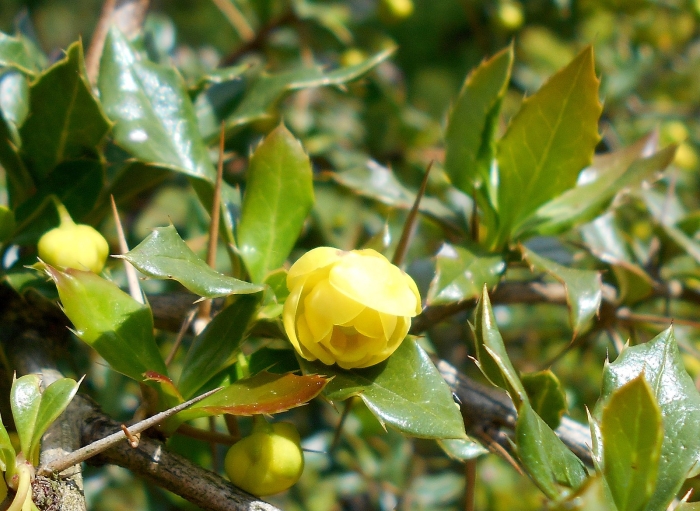Paleleaf Barberry
(Berberis candidula)
Paleleaf Barberry (Berberis candidula)
/
/

Salicyna
CC BY-SA 4.0
Image By:
Salicyna
Recorded By:
Copyright:
CC BY-SA 4.0
Copyright Notice:
Photo by: Salicyna | License Type: CC BY-SA 4.0 | License URL: https://creativecommons.org/licenses/by-sa/2.0 | Uploader: Salicyna | Publisher: Wikimedia Commons |



























Estimated Native Range
Summary
Berberis candidula, commonly known as Paleleaf Barberry, is an evergreen shrub native to the thickets and forest understories of south-central China. It typically grows to a height of 2-4 feet (0.6-1.2 meters) and a width of 3-5 feet (0.9-1.5 meters), with a dense, mounding habit that makes it suitable for mass plantings and as a low hedge. The leaves are a distinctive pale green to blue-green, which stand out in the garden. In spring, it produces small, yellow flowers that are modest in showiness, followed by red berries that persist into winter and provide interest as well as food for birds.
Paleleaf Barberry is valued for its tolerance of a range of conditions, including urban pollution, making it a versatile choice for city gardens. It is also appreciated for its evergreen foliage, which provides year-round interest, and its berries, which add winter color. This shrub is commonly used for foundation plantings, hedges, and as a ground cover in landscape designs. It prefers full sun to part shade and requires medium amounts of water, with well-drained soils being ideal. While it is generally low-maintenance, it can be susceptible to rust diseases and may require occasional pruning to maintain its shape.CC BY-SA 4.0
Paleleaf Barberry is valued for its tolerance of a range of conditions, including urban pollution, making it a versatile choice for city gardens. It is also appreciated for its evergreen foliage, which provides year-round interest, and its berries, which add winter color. This shrub is commonly used for foundation plantings, hedges, and as a ground cover in landscape designs. It prefers full sun to part shade and requires medium amounts of water, with well-drained soils being ideal. While it is generally low-maintenance, it can be susceptible to rust diseases and may require occasional pruning to maintain its shape.CC BY-SA 4.0
Plant Description
- Plant Type: Shrub
- Height: 2-4 feet
- Width: 3-5 feet
- Growth Rate: Slow
- Flower Color: Yellow
- Flowering Season: Spring
- Leaf Retention: Evergreen
Growth Requirements
- Sun: Full Sun, Part Shade
- Water: Medium
- Drainage: Slow, Medium
Common Uses
Bank Stabilization, Bee Garden, Bird Garden, Border Plant, Butterfly Garden, Deer Resistant, Groundcover, Hedges, Low Maintenance, Rock Garden
Natural Habitat
Thickets and forest understories in south-central China
Other Names
Common Names: Silverberberis
Scientific Names: , Berberis candidula, Berberis hookeri var. candidula, Berberis laojunshanensis,
GBIF Accepted Name: Berberis candidula C.K.Schneid.